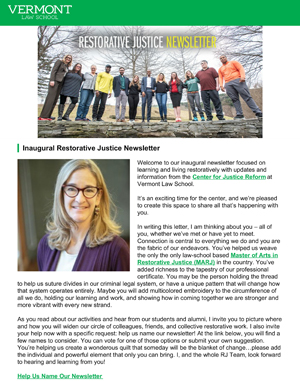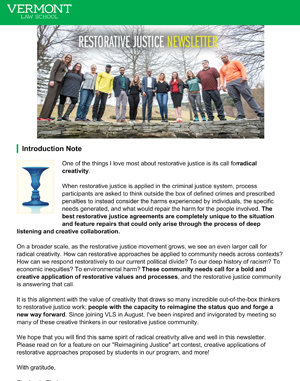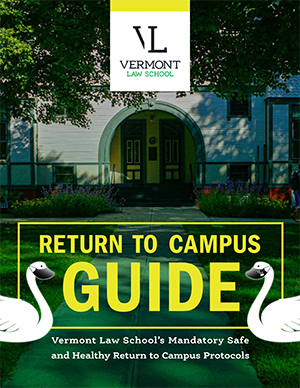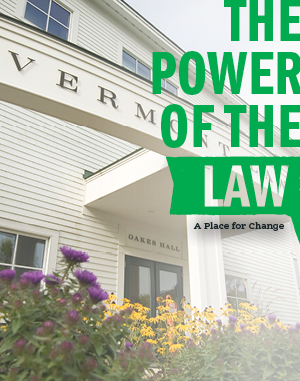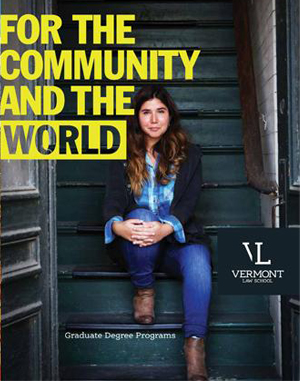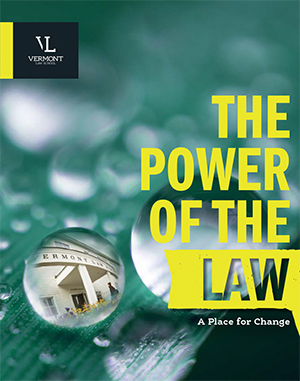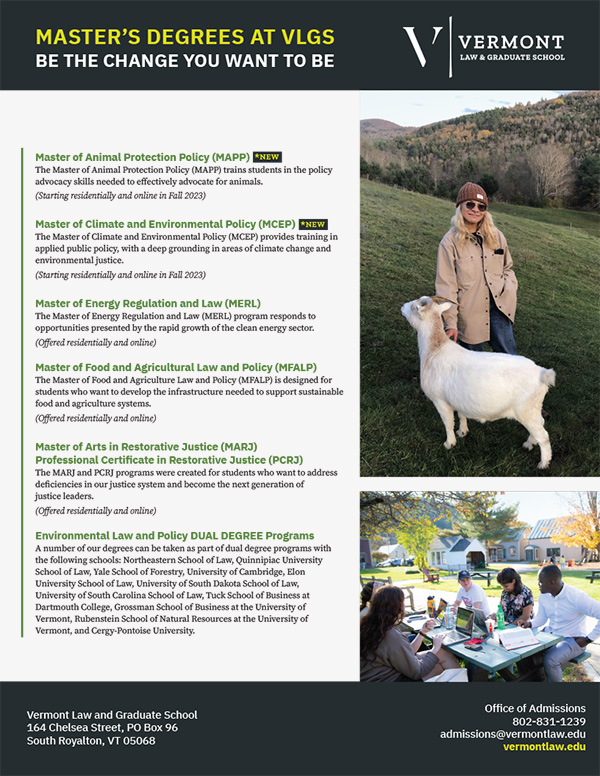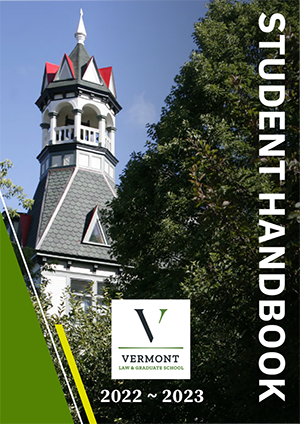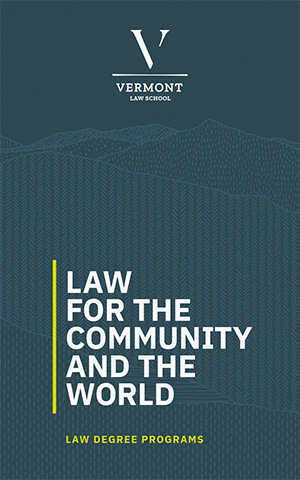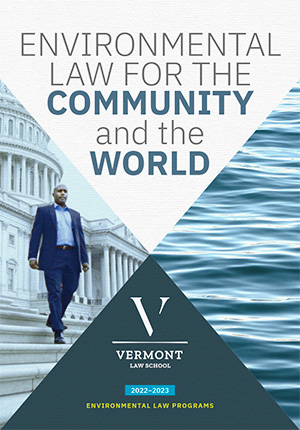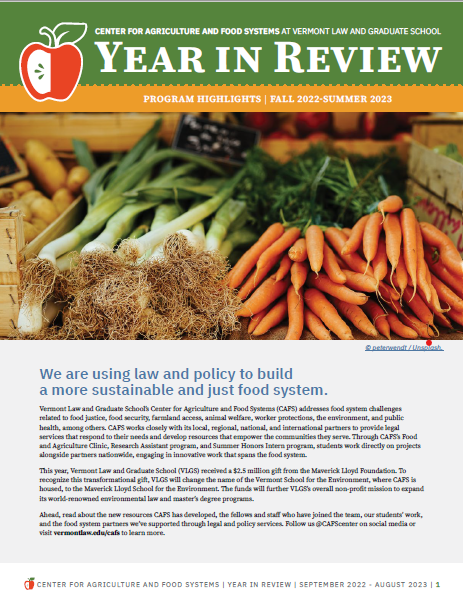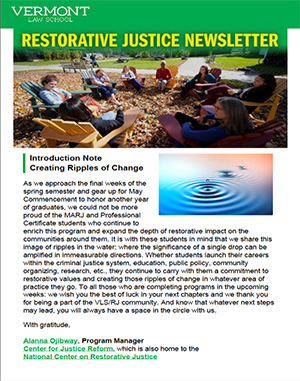The Institute for Energy and the Environment (IEE) at Vermont Law School today released a report titled "Woody Biomass: The Path Toward a Sustainable Use of Vermont's Forests." The report points to sustainable paths regarding the potential increase in the use of woody biomass for electricity, and suggests policies to be adopted by Vermont to ensure long-term forest health and productivity.
The report, available at vermontlaw.edu/IEE/publications, was funded by the Vermont Public Service Department and supported by the Vermont Agency of Natural Resources through the Department of Forests, Parks and Recreation.
Woody biomass, humanity's oldest energy source, is once again seen as an attractive source in part because of its renewability potential. Interest is particularly strong in Vermont, given the potential to supply significant amounts of wood for energy. In addition, the Vermont legislature recently enacted Act 56, or the Renewable Energy Standard, which establishes mandatory amounts of renewable energy—55 percent starting in 2017—to be provided by all of the state's retail electricity suppliers. Woody biomass is one of the eligible renewable energy sources.
The pressure on Vermont's forests includes an external factor: neighboring states. Vermont has only two operating wood-fired biomass electric power plants, but New York and New Hampshire together have more than 20 plants that are partially fueled by Vermont's forests. The increasing regional biomass market has different woody biomass definitions and requirements adopted under different states' renewable energy programs. For example, the sustainability standards adopted by Vermont's Department of Forests, Parks and Recreation would be mandatory under Vermont's Renewable Energy Standard, but not necessarily for biomass energy plants in other states that might use Vermont's wood as a fuel source.
Looking at this regional market and ecosystem, the report strongly recommends conversations among Northeastern states, including the adoption of a standard definition of eligible woody biomass and minimum sustainability criteria across each state's renewable energy programs.
"The potential of an increased regional market for woody biomass for electricity can be a real threat to Vermont's forests if the right sustainability standards are not in place," said Carla Santos, Global Energy Fellow at the IEE and one of the leading authors of the report. "Greater coordination among Northeastern states can help Vermont's attempts to protect its forests despite the increased use of state woody biomass to supply electricity in other areas. This report can be used as a starting point for conversations between Vermont and neighboring states."
"I appreciate the perspective provided by this report, and the added voice for forest conservation," said Commissioner Christopher Recchia of the Vermont Public Service Department. "At its core, the report recognizes that, to be a sustainable part of our renewable energy future, woody biomass needs to be managed sustainably, not just in Vermont, but across the region. It is why we have worked closely with our Department of Forests, Parks and Recreation to develop harvesting guidelines and procurement standards in Vermont and will work with our counterparts in other states to gain regional support for such measure."
The Institute for Energy and the Environment at Vermont Law School provides accessible resources on contemporary energy law and policy and is modeled on the fundamentals of a successful public policy consulting firm. The IEE distributes scholarly, technical and practical publications; provides forums and conferences for professional education and issue development; and serves as a center for graduate research on energy issues, with environmental awareness. IEE research associates are selected from top students in the nationally recognized energy and environmental programs at VLS. The energy program offers a Master of Energy Regulation and Law (MERL) degree, energy law concentrations within the juris doctor program, and a Master of Laws (LLM) in Energy Law for current lawyers. For more information about the Institute for Energy and the Environment, visit vermontlaw.edu/iee, email jthomas@vermontlaw.edu, or call 802-831-1151.
###
Vermont Law School, a private, independent institution, is home to the nation's largest and deepest environmental law program. VLS offers a Juris Doctor curriculum that emphasizes public service; three Master's Degrees—Master of Environmental Law and Policy, Master of Energy Regulation and Law, and Master of Food and Agriculture Law and Policy; and four post-JD degrees —LLM in American Legal Studies (for foreign-trained lawyers), LLM in Energy Law, LLM in Environmental Law, and LLM in Food and Agriculture Law. The school features innovative experiential programs and is home to the Environmental Law Center, South Royalton Legal Clinic, Environmental and Natural Resources Law Clinic, Energy Clinic, Food and Agriculture Clinic, and Center for Applied Human Rights. For more information, visit www.vermontlaw.edu, find us on Facebook, and follow us on Twitter.




